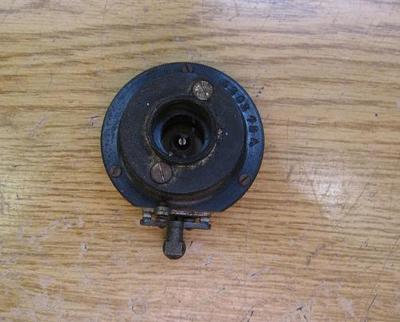REPRODUCER REBUILD PROCESS
When reproducers come in, they are normally dirty and the rubber gaskets inside that cushion the mica (the clear membrane that produces the sound and tone) are dry rotted and petrified with age. This produces a harsh tinny sound to the music. Shown here on my work bench is a popular Victor Victrola Exhibition reproducer that has these common ageing effects:
We then take it all apart and clean all the metal parts and clean out the inside. Many times there are also insects that had made a home in there many years ago and left debris that needs to be removed as well. Here you can see the hardened white rubber gasket materiel that no longer functions properly giving poor sound performance.
Here is the reproducer cleaned and ready to re-assemble. Notice the fresh white rubber gaskets that will now allow the reproducer to function at it's best. None of this rebuild work lowers the value of the phonograph, but adds to it's value.
After everything is cleaned, we then re-assemble with fresh rubber gaskets, a new rubber back flange and a new mica if needed to give the reproducer a good fit on the tone arm and have minimal air/sound loss. We adjust the needle bar that attaches to the center of the mica so it has proper pressure to produce the best sound.
If you have any questions about any of our services,
please feel free to call us (800-239-4188) or email us at victrola@victrolarepairservice.com.
please feel free to call us (800-239-4188) or email us at victrola@victrolarepairservice.com.






